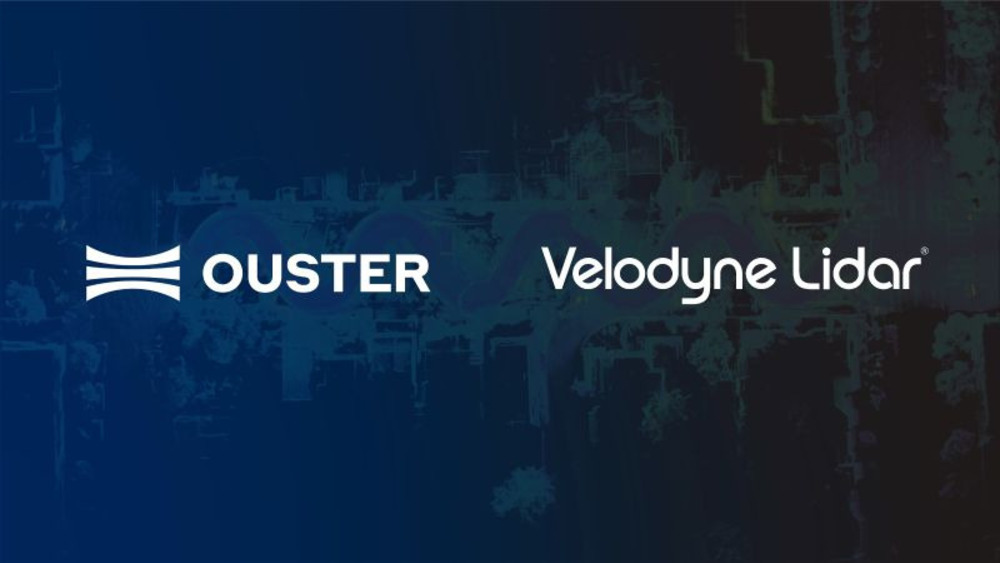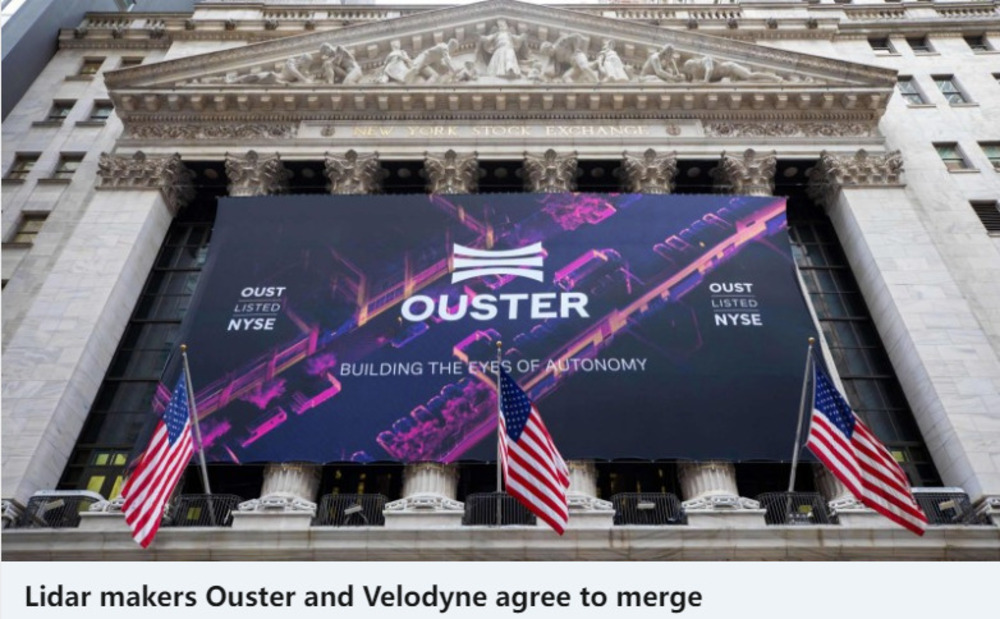Velodyne, Acquired by Ouster
Author: Release time:2022-11-25 08:55:06
The first large-scale merger in the LiDAR industry occurred between two listed companies, Velodyne and Ouster. Ouster acquired Velodyne at market price.

On November 7, Velodyne and Ouster issued an official statement announcing the merger. The combined market value of the new company is about $400 million.
The current price-to-book ratio of Velodyne is less than 1, that is, the current market value of Velodyne is lower than its net asset value. The merger of the two parties is equivalent to selling Velodyne to Ouster at a discount.
The most unexpected thing about this merger is that Velodyne, which was once in the field of autonomous driving, ended in this way.
A time for Velodyne
In 2007, Velodyne become famous at the US DARPA Challenge. Since then, this core sensor brand in autonomous driving has begun to appear on the stage.
At the time, Velodyne founder David Hall applied for a US 7969558 patent for the invention (titled “High definition LiDAR System”). With this patent for mechanical LiDAR, Velodyne ushered in an era when almost every L4 self-driving company on the market was lining up to buy Velodyne’s products. At CES in 2016 and 2017, people in the industry flocked to the Velodyne booth like a pilgrimage.
Depressing LiDAR stock market
In October 2020, Velodyne went public through the backdoor, becoming the first LiDAR stock. Subsequently, seven LiDAR companies including Luminar, Innoviz, Ouster, Aeva, AEye, Cepton, and Quanergy landed on the US stock market.
After going public in October 2020, the stock price of Velodyne peaked at $22.82 per share at the end of the year. By the second half of 2021, Velodyne’s stock price has continued to decline. At present, Velodyne’s share price has fallen to $1, with a cumulative decline of about 78% this year.
Ouster went public in March 2021 and closed at $11.19 on its first day of listing. But as of November 11, U.S. time, the closing price has fallen to around $1. It’s not just these two LiDAR companies that have slumped in share prices, the other six LiDAR companies have also faced the same situation. Since the beginning of 2022, the market value of LiDAR companies such as Quanergy, AEye, Aeva, Cepton, Innoviz, and Luminar have all halved. In addition to the announced merger of Velodyne and Ouster, and Quanergy’s delisting, only Luminar, Cepton, and Innoviz have been appointed by car companies, but there is still a year or two away from the scale. The development of the other two companies, AEye and Aeva, is also not optimistic.
The plummeting share price and difficult profitability have cast a shadow over the development prospects of the LiDAR field. Against this backdrop, it’s no surprise that Velodyne and Ouster are cuddling together for survival.
Why do they merge?

1. Technical route
Velodyne is the originator of mechanical LiDAR.
Founded in 2015, Ouster has been showing people the image of “Digital LiDAR”. “Digital LiDAR” refers to the “solid-state” realized by the full semiconductor design of the LiDAR, through solidifying thousands of optoelectronic devices such as transmitters and receivers inside the original LiDAR into the chip. On this basis, Ouster added a rotating device inside the LiDAR, allowing it to scan in a 360-degree direction. In terms of technical principles, Ouster’s products are still mechanical LiDARs.
2. Cash shortage
Convergence of technical routes and strong homogeneity are important basic conditions for the merger of Velodyne and Ouster. The cash shortage is another important driving force behind the merger. After the completion of the merger, the cash flow of the new company can maintain the operation of the new company for two years. In contrast, the original cash of each company can only barely support one year.
3. Weakening market position
In the mechanical lidar market, Velodyne’s LiDAR has lost its competitive advantage. In the Chinese market, Velodyne lost many customers and potential customers due to inappropriate pricing strategies and pushed them to Chinese LiDAR companies. Ouster has focused more on niche markets except for cars, such as robotics and industrial. Although Ouster has invested in the automotive field, it has not had any public car company customers so far. In the passenger car market, Velodyne’s cooperation with Hyundai Motor has not yet made any new progress. The expected time to start mass production is to wait until 2025. Therefore, how the two sides will rely on the current cash flow on hand to survive until 2025 is still unknown.
Ibeo’s bankruptcy, the merger of Veldoyne and Ouster, the delisting of Quanergy, and the poor financial performance revealed by 8 LiDAR companies listed on the American stock market. All reflect a common problem- lack of self-sufficiency capacity, weak profit prospects, and inability to get external financing.
Market reshuffling
Although Velodyne has the first-mover advantage, it has not established strong technical and commercial barriers. With more and more players entering the LiDAR track, Velodyne is no longer the “God’s favored one” under fierce competition.
Whether in the Chinese market or the U.S. market, Velodyne’s market share has been eroded by two new LiDAR rising stars in China.
Even in Velodyne’s U.S. base, Hesai’s took orders from many L4 autonomous driving companies. Under the offensive of Robosense and Hesai, Velodyne finally had to sacrifice a patent stick.
In the passenger car market, Velodyne’s in-vehicle lidar does not have a first-mover advantage and is even on the same starting line with new players. Velaray, a Velodyne’s LiDAR model for the passenger car market was unveiled as early as 2018, but it has been slow to have it installed on cars. In contrast, other LiDAR companies have achieved new highs in shipments through cooperation with car companies. Up to now, Robosense has fixed-point orders for more than 50 models. By the end of this year, it will have 11 models entered into the SOP. Li Auto L9 comes standard with Hesai LiDAR. At the end of September 2022, Hesai announced that the monthly delivery of AT128 exceeded 10,000 units, becoming the “world’s first” automotive lidar company with monthly deliveries exceeding 10,000 units.
This is the “foreign trouble” Velodyne has faced:
i. The share of mechanical lidars has been eroded.
ii. The progress of mass-produced automotive lidars has been slow.
iii. The gap with latecomers has continuously widened.
Also, there are “internal worries” or internal struggles from Velodyne. Velodyne employees said in an anonymous interview with “Automotive News”: The biggest challenge of the company is not fierce peer competition or rapid changes in the industry. “Internal discord” is the main reason for weakening Velodyne’s position in the industry. Due to internal and external troubles, Velodyne’s proud advantages disappeared, and it was also crushed by newly grown companies.